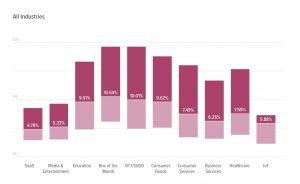
I spend a lot of time with client organizations that have invested both time and resources into mapping their customers’ journey so I have seen the gamut of touchpoint maps, emotional curves and even on one occasion, the stunning graphical portrayal of the path taken by a certain Persona, frustrated with trying to return a laser printer. Of course, some are better than others, some are based on data, some on opinion but the real question is a simple one: What impact did they have in helping the company create greater value for shareholders?
Some might argue that that is asking too much of journey mapping. After all, they are just one of many tools experts trained in Design Thinking use to better understand the functional and emotional roller coaster that is associated with what we deliver to customers.
I disagree. In my experience, when done well, and leveraging mobile technology, customer journey mapping can provide a powerful platform for greater customer-driven innovation, generated faster and with higher quality.
To achieve tangible business value from journey mapping exercises, I suggest you answer three questions:
- Does your journey map tell a powerful story from both employees and customers?
- Does your journey map align your whole organization toward a common view of your collective performance in delivering a competitively superior experience?
- Does your journey map go beyond telling the story, to actually doing something about it?
Let’s take them one at a time.
Does Your Journey Map Tell a Powerful Story from Both Employees and Customers?
Certainly, the core idea of a journey map is that it visually highlights the customer’s view of their experience. Good journey maps do more than just describe what happens, they actually uncover those things that were previously invisible to us. They explain the reasons for a customer’s specific behavior or the alternative path they took when confronted with an unexpected roadblock. But for most organizations, there is another journey that is just as important and that is the experience of the front line employee.
In fact, we would suggest that there is a level of risk that is taken if you view the journey solely from the customer’s perspective. There are three reasons why this matters:
- Frontline employees provide additional context: Although they can’t tell you what the customer is thinking or feeling, they do have helpful insight into what customers are doing, and they provide great insight as to what is happening, especially around those touchpoints that represent chronic problems in the experience.
- The gap matters: Understanding the gap between how customers versus employees see the experience is really important. It is not uncommon to see a clear divergence between what customers see as important and how you are performing from the employees’ view of the same experience. Closing these gaps is vital. The “satisfaction mirror” that exists between frontline employees and customers is often a critical driver of loyalty and advocacy.
- Clues to future experiences: Hidden in this information are clues to exceeding customer experiences in ways that you would never imagine if you hadn’t seen it for yourself. I will never forget what Danny Wegman of Wegmans Food Markets told me in describing the relationship between his employees and their customers:
“If you measure the service you get at Wegmans compared to some other place, we always come out pretty good on that. But I think it’s gone to a new level. I hear that when some folks are in a bad mood, they go to Wegmans to cheer up. People greet you with a smile and ask you if you want a taste of something. Customers get a happy fix and that makes our people feel spectacular. It’s circular.”[i]
We have seen this countless times in the caring and skilled interactions of our clients’ high performing frontline employees as they carry the heart of their firm’s brand promise to every customer interaction.
Perhaps I have overstated this point. Well good, it deserves to be overstated. As more and more digital channels are introduced to intermediate the customer experience, employee interactions become even more critical, not less. Let’s never forget the words of Fred Reichheld who told us back in 1996 in The Loyalty Effect, “If you wonder what getting and keeping the right employees has to do with getting and keeping the right customers, the answer is everything.”[ii] For your journey map to treat front line employees as merely silent witnesses to the customer experience is to ensure you are learning only half of the story.
Does Your Journey Map Align Your Whole Organization Toward a Common View of Your Performance in Delivering a Superior Experience?
The problem with most customer journey maps is they aren’t terribly portable. If you convert them to a PDF, they are usually so detailed it is hard to view them on anything smaller than a 60 inch monitor. Printing them out as posters is a good idea, but as with one client, the only way we could view their recently completed map was to visit their head office. Even if the map was developed using an online tool, often reviewing what it says can be like viewing a map of the London Tube. You know Piccadilly Circus Station is there somewhere, but it takes a while to find it.
Like many tools that over time, find themselves over engineered, many journey mapping tools suffer from trying to communicate too many things through too small a window. No wonder so many line managers can’t find the value in journey maps.
The way journey maps overcome these limitations is perhaps obvious. Follow three principles to ensure the product of the hard work of developing them translates into tangible impact:
- Bring the story to life through media: If a picture is worth a thousand words, then a video is worth a million. Present a journey map not informed by fancy graphics, but by the perceptions, voices and emotions of actual customers and employees. It is one thing to review a score about your “lost package” performance, or to read a few customer comments – it is another thing entirely to hear the impact it has on the person who was counting on its delivery.
- Combine quantitative and qualitative: It helps to tell the story with both media and facts. We believe presenting both, side-by-side, adds color and insight to help focus on real improvement opportunities and to test new ways to innovate that would create measurable changes in consumer behavior.
- Make it easily shareable: By shareable I mean throughout the organization, but also to key trusted advisors as well. Being able to easily share the journey map invites comments and insights from the best experts in the world on your particular topic and provides significant business value.
CX Journey Maps that provide this level of transparency and leverage rich media to tell a compelling story, not only create alignment, but additionally they generate energy and enthusiasm toward a common purpose.
Does Your Journey Map Go Beyond Telling the Story to Doing Something About it?
Remember the point of all of this? When do we start to see the business value?
The best journey mapping tools don’t just capture the nuances, emotions, and often hidden opportunities to improve the customer experience; they provide a platform to engage directly with customers to co-create solutions to the gnarly problems they uncovered.
Speed matters. Taking weeks if not months to take action based on the data collected from journey mapping can be a fool’s errand. It’s essential to move right from priority issues identified by customers into brief, targeted online discussions with those same customers. As a result, you can better understand their issues, brainstorm solutions that weren’t obvious, and test solutions that will regain their trust and loyalty instead of waiting six weeks to hire a market research firm.
CX Journey Maps that achieve real business value actually aren’t “maps” at all. They are really an “always on” qualitative research platform, allowing an organization to deeply understand what customers are experiencing and take action that positively influences desired behaviors. Married with a robust CX management system, they provide a comprehensive solution to harness customer-driven innovation in about half the time of traditional methods.
Move Forward
Technology continues to advance our ability to understand the customer experience with greater granularity and insight. Traditional barriers to engaging with customers are no longer an excuse for taking months to implement improvements that exceed targeted expectations and outperform competitors. Journey mapping tools of the past served their purpose, but it is time to acknowledge the value they added and move forward to a new standard that is enabled by digital devices and SaaS-based platforms that are themselves re-writing the rules of competition.
The Internet of Things is not a buzzword. It is how the world works; it is time customer experience journey mapping caught up.
[i] James Heskett, W. Earl Sasser and Joe Wheeler, The Ownership Quotient, Harvard Business Publishing, 2008 pp. 104-105
[ii] Frederick Reichheld, The Loyalty Effect, Harvard Business School Press, 1996, p. 91
Business & Finance Articles on Business 2 Community(106)
Report Post






